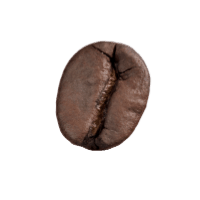Ever heard people say that in order to achieve a better coffee flavor for your cup you should grind your own coffee? I have heard it, and applied it. But I wanted to dive deep to understand more and so did a small house experiment. The results:
You get a better coffee cup flavor and aroma when you freshly grind your own coffee. So, it is worth it to grind your coffee and it is better to buy whole beans over ground coffee.
Okay so those were the results. Want to know more and why? Also, what type of grind mill is better? Finally, is it different to grind at home as a consumer than to grind at a coffee shop as a business owner? Please read along to learn all this and more.
Effect of grinding on coffee

So as the infographic above illustrates, when coffee is ground it is smashed into tiny pieces. This in turn increases the surface of exposition of the coffee to the air, and thus it’s contact with oxygen and humidity.
The coffee bean acts as a protective filter to all of the volatiles inside.

But when coffee is turned into finer particles, all the inner parts are exposed and thus begin to deteriorate. Volatile aromas are dissipated and lipids start to oxidate. It is said that after just 15 minutes of exposure of coffee to the air it starts to deteriorate.
Did you know that coffee has over 850 volatile compounds identified? Of these, around 40 contribute to its aroma.
Belitz et al. (2009)
Ground versus freshly grind: can you notice the difference?

So we conducted a small test in our home which consisted on grinding coffee and leaving it inside an air packed container. After a week we brewed a cup of coffee with this ground coffee, and compared the beverage with the other two cups of coffee made with freshly ground coffee. One of these was ground using a blade mill and another one using a blurr mill.
Our hypothesis was that there would be a difference between the freshly ground and the one-week-old ground coffee. But we were skeptical to see if there would be a difference in results when comparing blade mill versus blurr mill.
We used Arabica coffee grown in Costa Rica at 1 650 meters of altitude, on a region called Tarrazu of San Marcos. The variety is Catuai, and it is considered a specialty coffee.
We ground using a blade mill for 10 seconds and verified the consistency of the final ground coffee. When using the blur mill we ground using a medium-size grind. The 1-week old coffee had being ground using the blade mill.
After grinding we brewed the coffee drinks using a Kalita method, with a 1 to 15 water to coffee ratio. All the coffee drinks were left to cool to a similar temperature before tasting.

The results: Aroma

When smelling both coffee samples before brewing, freshly ground and ground, you could definitely feel the difference in aroma being stronger the one on the freshly ground coffee.
So this got me thinking. How long do you think commercial ground coffee has been sitting around in shelves, or how long has it passed from the time it was ground to the time it got to your house? It could be weeks or months. Sometimes it could go even up to two years. There are many developments in coffee packaging, but there is no magic that can substitute the whole coffee as a barrier for keeping aromas and flavors inside.
The results: Flavor
If you could qualify in a scale of 1 to 10, 10 being a highly flavorful and aromatic coffee and 1 being completely insipid and odorless, we could qualify each coffee drink as follows:
coffee grounded 1 week before with blade mill: 5
coffee grounded with blurr mill: 9
coffee grounded with blade mill: 8
So there was definitely and absolutely a difference between freshly brewed coffee and the 1-week old coffee. It was so obvious. The freshly brewed coffee tasted so much better, it was more acidic, it had more body, like if it embraced your hole mouth. The 1-week old coffee was still good because it was a high-quality coffee, however, the flavors and aromas went completely down. It was as if you turned down the volume of flavor and aroma.
Effect of the type of mill

A blade mill cuts the coffee beans by the movement of the knives. This results in different sized coffee fragments. The size depends on the amount of time that you use the grinder. I have found that grinding during 10 seconds with the mill almost to the top gives me good consistency.
On the other hand, a blurr mill smashes the coffee beans as the pass down the mill.This results in coffee fragments that are much more consistent in size and are less damaged by the machine.
So can you feel the difference?
Well, we were actually amazed to see that there is a noticeable difference. When comparing the two types of mills, we were surprised to notice a better flavor and aroma by the blurr mill in comparison to the blade mill. However, as a consumer at home I would dare to say it is not a critical or significant difference. Using a blade mill would also give you good coffee, just not as good as the blurr mill.
Now, what about a coffee shop?
For a coffee shop consistency is highly important. If you serve specialty coffee and have quality as one of your top values there is definitely no argument in the statement that you would need to grind your coffee and have your own mill, rather than buy ground coffee.
A mill for an espresso machine would be different than the mill used at home. Espresso machines require a very fine ground coffee because of the small-time that the water is in contact with the coffee.
On your own coffee shop you most definitely will want to give your customers the same coffee every time and to be able to retain as much flavor and aroma as possible for your specialty coffee. Also, the aroma that is lifted when grounding coffee could be a great atraction for your customers for the sensations and memories that it evokes.
So, as a coffee consumer at home, I would prefer to have freshly ground coffee over ground coffee, but would not stress too much about which type of mill I would use for grinding the coffee beans. However, in a coffee shop, I would definitely have the right mill for an espresso machine and therefore would strive to have freshly ground coffee to achieve consistency in quality.
References: Belitz, H.-D., Grosch, Werner, Schieberle, Peter. 2009. Food Chemistry. 4th edition. Berlin.
